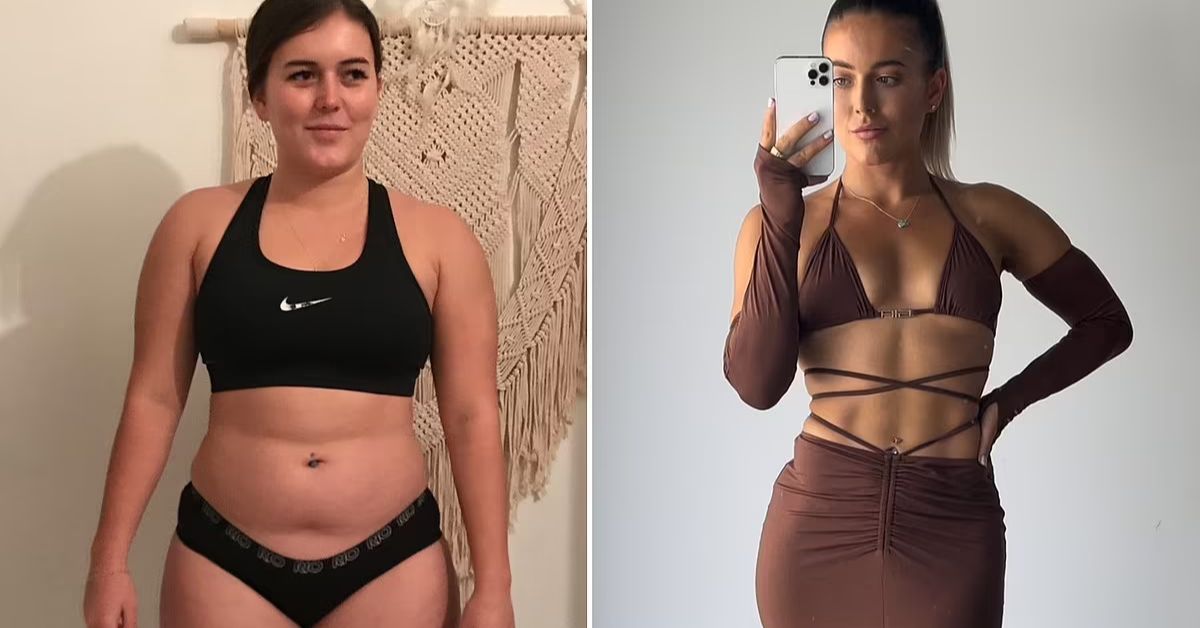Many individuals search for effective ways on how to lose weight fast whether preparing for a big event, enhancing health outcomes, or increasing self-confidence. While shedding pounds rapidly can be achievable, it’s essential to follow methods that preserve metabolism, safeguard muscle mass, and support long-term wellness.
This comprehensive guide delivers a practical approach for those serious about learning how to lose weight fast without compromising their health. Inside, you’ll find expert-supported strategies for smart meal planning, fat-burning workouts, hydration tips, recovery routines, and science-based techniques that accelerate progress safely. Each section breaks down proven methods into actionable steps you can begin right away.
Healthy Calorie Reduction
Shedding pounds quickly starts with creating a calorie deficit burning more energy than you consume. Here’s how to do that safely:
Calculate Your Needs
Estimating your daily energy requirement is the first step. Use a reliable online calculator or formula that considers your age, gender, height, weight, and activity level. This gives you a number to work with your maintenance calories.
Plan a Moderate Drop
Rather than slashing too drastically, reduce your intake by about 500–750 calories per day. That typically leads to fat loss at a steady pace without impairing hormone balance. Be sure to avoid under-eating, which can stall your metabolism and reduce muscle mass.
Track Precisely
Maintain a food diary or log using an app to track everything you eat. Weigh portions, note ingredients, and include snacks and drinks. Consistency in tracking reveals where hidden calories are creeping in and helps you stay accountable.
Optimized Meal Composition
Not all calories have the same effect. Structuring your meals efficiently can improve fullness, energy, and nutrient intake.
High-Protein Foundation
Every meal should include a quality protein source like chicken breast, eggs, lean beef, tofu, Greek yogurt, or fish. Protein supports muscle retention, keeps you satisfied, and boosts your metabolic rate through increased thermogenesis (calorie burn during digestion).
Complex Carbohydrate Choices
Focus on slow-digesting carbs such as sweet potatoes, brown rice, oats, and quinoa. Paired with protein and fiber, they help maintain energy levels, avoid blood sugar dips, and sustain workouts.
Healthy Fats in Balance
Include moderate amounts of healthy fats from avocados, olive oil, nuts, seeds, and fatty fish. Fats aid in nutrient absorption and hormone regulation. They also add satisfaction to meals on lower-calorie plans.
Vegetable Emphasis
Half your plate should be non-starchy vegetables mirror, broccoli, peppers, leafy greens. Low in calories but high in fiber and volume, they help reduce hunger, increase micronutrient intake, and add texture to meals.
Intermittent Eating Patterns
One effective way to reduce calories without feeling deprived is through timed eating windows.
Time-Restricted Nutrition
Popular formats include limiting your food intake to a 6–8-hour window each day (e.g., eating between 12 pm and 8 pm). This helps control total daily intake while supporting metabolism and digestion.
Occasional Longer Fast
Every 1–2 weeks, a 24-hour fast or water-only fast from dinner one day to dinner the next can reset appetite hormones, reduce cravings, and support insulin regulation. Consult a healthcare provider before attempting extended fasting.
Focus on Nutrient Timing
Check that each eating window includes balanced macros protein, fiber, fruit, and healthy fats. Avoid high-sugar options that spike blood sugar or cause later crashes.
High-Efficiency Exercise Methods

Movement plays a key role in fast fat loss. While diet changes drive the scale down, workouts enhance calorie burn, preserve lean muscle, and reshape your body.
High-Intensity Interval Training (HIIT)
HIIT involves short bursts of intense activity followed by brief rest periods. For example, sprinting for 30 seconds and walking for 60 seconds, repeated 10 times, takes under 20 minutes but can burn as many calories as a longer cardio session.
The benefits are two-fold: calories are burned both during and after the workout. This “afterburn” effect, also known as excess post-exercise oxygen consumption (EPOC), keeps metabolism elevated for hours.
Strength Training for Fat Loss
Lifting weights may not seem like a fast-fat-loss tool, but it’s one of the best long-term strategies. Muscle tissue burns more calories than fat at rest. By building lean muscle, you increase your resting metabolic rate.
In a typical week, schedule 3 sessions targeting major muscle groups legs, back, chest, arms, and core. Focus on compound movements like squats, deadlifts, push-ups, and pull-ups. These exercises engage more muscles and require greater energy output.
Daily Activity Enhancements
Don’t underestimate non-exercise movement. Walking 8,000–10,000 steps per day, standing instead of sitting, using stairs, and gardening all count toward calorie expenditure. These small changes can add up to an additional 200–400 calories burned daily.
Hydration and Metabolism
Water supports every metabolic process. Often overlooked, proper hydration plays a vital role in fat loss.
How Water Impacts Fat Burn
Fat metabolism (lipolysis) requires water. The first step of breaking down fat into usable energy, called hydrolysis, needs adequate fluid intake. Being dehydrated even slightly can slow this process.
Appetite Regulation
Thirst is frequently mistaken for hunger. Drinking a glass of water before meals helps reduce calorie intake. It also keeps you feeling full and curbs unnecessary snacking.
How Much to Drink
Aim for:
- 3 liters (13 cups) for men
- 2.2 liters (9 cups) for women
If exercising intensely or living in hot climates, increase by 1–2 cups. Infused water (with lemon, mint, cucumber) adds flavor without calories.
Strategic Supplement Support
Supplements aren’t required but may enhance efforts if used properly. Choose science-backed options and use them to complement not replace diet and activity.
Whey Protein or Plant-Based Shakes
Use post-workout or as a meal replacement to meet protein goals. Protein shakes are portable, satiating, and reduce cravings.
Caffeine and Green Tea Extract
These thermogenic ingredients may boost fat oxidation and energy, particularly when taken pre-workout. Green tea’s EGCG compound enhances metabolism, while caffeine improves performance and suppresses appetite.
Fiber Supplements
If whole food fiber intake is low, psyllium husk or glucomannan can increase satiety and regulate digestion. These absorb water and expand in the stomach, helping you feel full.
Electrolytes
When cutting carbs, your body releases water and sodium. Using electrolyte powders (with sodium, potassium, magnesium) supports energy, hydration, and prevents muscle cramps.
Avoiding and Breaking Plateaus
Plateaus are a natural part of weight loss. The body adapts to lower intake and new routines. Recognizing and responding to these pauses is key to continued progress.
Common Plateau Causes
- Reduced metabolism due to smaller body size
- Hormonal adjustments
- Reduced daily activity
- Less accurate food tracking
Tactical Adjustments
- Recalculate Calorie Needs: Smaller bodies need fewer calories. Update your TDEE every 4–6 weeks.
- Adjust Macronutrient Balance: Increase protein and fiber; reduce refined carbs and fats temporarily.
- Change Your Workouts: Add intensity, reps, or switch to different exercises.
- Refeed Days: Once weekly, increase carbs and calories to reset hormones and restore energy.
Sleep, Stress, and Hormones
Weight management isn’t just about what you eat or how often you exercise. Internal factors like sleep and stress directly influence fat storage, cravings, and motivation.
Why Sleep Matters
Lack of sleep disrupts hunger-regulating hormones:
- Ghrelin increases, making you feel hungrier.
- Leptin decreases, making it harder to feel full.
Additionally, tired bodies crave high-carb, high-fat foods for quick energy. Aiming for 7–9 hours of quality sleep every night helps control appetite and supports muscle recovery.
Stress and Cortisol
Chronic stress triggers the release of cortisol, a hormone that:
- Promotes abdominal fat storage
- Increases sugar cravings
- Reduces fat-burning hormone activity
Use breathing exercises, journaling, walking outdoors, or talking with a friend to unwind daily. Lower stress supports faster and healthier weight loss.
Lifestyle Habits That Reinforce Results

Fast results are great, but keeping them requires ongoing lifestyle alignment. Tiny shifts made every day reinforce momentum.
Daily Routines That Support Progress
- Morning: Drink water immediately upon waking. Stretch, walk, or meditate for 10 minutes.
- Midday: Eat your most calorie-dense meal around lunch to fuel productivity.
- Evening: Turn off screens early. Prepare your next day’s food and hydration goals.
Stay Accountable
Join a weight loss group, partner with a friend, or hire a coach. Regular check-ins help maintain commitment and catch problems early.
Adjustments for Special Cases
Some individuals require more tailored approaches to succeed quickly.
Women in Menopause
Hormonal shifts reduce metabolism and increase insulin resistance. Best practices:
- Emphasize lean protein and low-starch vegetables
- Perform resistance training 2–3 times/week
- Limit sugar and alcohol, which disrupt hormonal balance
People with Thyroid Issues
Underactive thyroids slow metabolism. Medication and medical supervision are essential. Focus on:
- Whole foods and minimal processed intake
- Regular low-impact movement (yoga, walking, light resistance)
Busy Professionals
Time constraints demand simplicity:
- Keep pre-portioned protein packs and veggies at work
- Choose 20-minute home workouts
- Schedule meals and exercise in your calendar like meetings
Transition to Long-Term Maintenance
Once initial fat loss is achieved, maintenance prevents rebound weight gain.
Gradual Increase in Calories
As your weight decreases, your body needs fewer calories. To prevent regain:
- Slowly increase intake by 100–150 calories/week
- Reintroduce carbs and fats strategically
- Watch for bloating or scale spikes
Keep Tracking Progress
Use the same habits that created weight loss:
- Weigh in weekly
- Log meals 2–3 days/week
- Take monthly progress photos
Flexibility Matters
Incorporate occasional treats, travel meals, and celebrations. What matters most is returning to your core habits the next day.
FAQs:
Q1: Is it possible to lose 10 pounds in a week?
Losing that much weight in one week is rare and mostly water weight. A 1–3 pound weekly loss is more realistic and safe.
Q2: Can skipping meals help?
Skipping meals may reduce intake but can lead to overeating later. Controlled fasting windows are safer than random skipping.
Q3: Are low-carb diets necessary?
Low-carb plans work well for some, but fat loss depends more on overall calorie balance and food quality.
Q4: How soon will I see results?
Visible results often show after 7–10 days of consistent changes, especially in energy, digestion, and mood.
Q5: What’s the best meal timing?
Eating earlier in the day supports metabolism. Try to finish eating 2–3 hours before sleep.
Q6: Do cheat days ruin progress?
One higher-calorie meal won’t derail progress, but multiple uncontrolled days might. Plan indulgences and return to normal right after.
Expert Tips and Case Insights
Trainer Insight: Coach Laura M.
“Fast fat loss comes down to movement variety, stress control, and sticking to simple nutrition. Focus on consistency over perfection.”
Real Case: Carlos, 41
Carlos dropped 12 lbs in 4 weeks by:
- Fasting until noon daily
- Doing 30 minutes of HIIT, 4x/week
- Drinking 4 liters of water/day
- Eating only whole foods and cutting soda
He now maintains with moderate carbs, weekend hikes, and lifting twice weekly.
Must Read:
- What Exercises Burn Belly Fat?
- Top Exercise to Lose Belly Fat Fast at Home
- 20 Best Exercises for Belly Fat
Conclusion:
Losing weight fast is possible with the right combination of structured eating, strategic exercise, sleep, hydration, and smart behavior changes. It’s not about extremes it’s about stacking multiple small wins.
This approach:
- Maximizes fat loss while preserving lean tissue
- Supports physical and mental energy
- Builds a lifestyle that prevents rebound weight
No shortcuts, just efficient systems that accelerate results safely.
You’re fully equipped to take action. Start with one or two strategies from this guide, stay consistent, and make adjustments weekly. The transformation you’re looking for is within reach.
